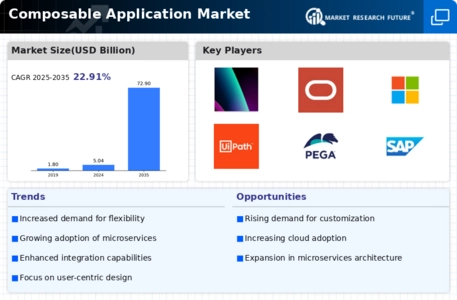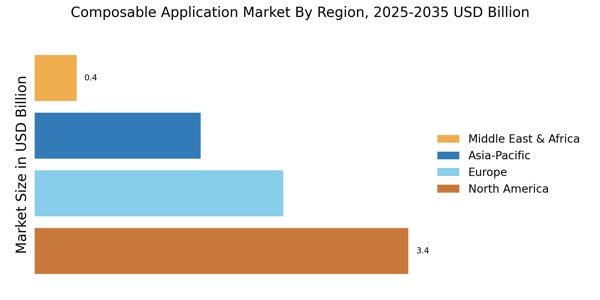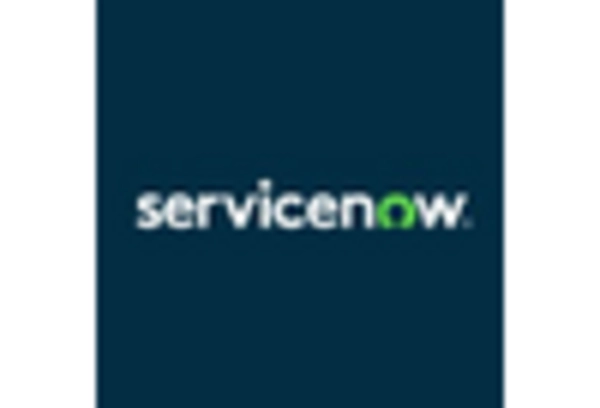Rise of Cloud Computing
The rise of cloud computing has been a pivotal driver for the Composable Application Market. As organizations increasingly migrate their operations to the cloud, the demand for composable applications that can seamlessly integrate with cloud services has surged. According to recent data, the cloud computing market is projected to reach a value of over 800 billion dollars by 2025. This growth indicates a strong inclination towards flexible, scalable solutions that composable applications provide. Furthermore, the ability to deploy applications rapidly in cloud environments enhances operational efficiency, making composable applications an attractive option for businesses aiming to innovate and adapt quickly. As a result, the Composable Application Market is likely to experience significant growth fueled by the ongoing cloud transformation.
Growing Need for Customization
The growing need for customization in software solutions is a prominent driver for the Composable Application Market. Businesses are increasingly recognizing that one-size-fits-all applications often fail to meet their unique requirements. Composable applications, with their modular design, allow organizations to tailor solutions to their specific needs, enhancing user satisfaction and operational effectiveness. Recent surveys indicate that over 60% of businesses prioritize customization in their software investments. This trend highlights the importance of flexibility in application development, as companies strive to differentiate themselves in competitive markets. Consequently, the Composable Application Market is poised for growth as more organizations seek customizable solutions that align with their strategic objectives.
Demand for Agility and Flexibility
In an era where business landscapes are constantly evolving, the demand for agility and flexibility has become a crucial driver for the Composable Application Market. Organizations are increasingly seeking solutions that allow them to respond swiftly to market changes and customer needs. Composable applications, with their modular architecture, enable businesses to assemble and reassemble components as required, fostering a more adaptive approach to application development. This trend is reflected in market data, which suggests that companies utilizing composable applications can reduce time-to-market by up to 30%. Such efficiency not only enhances competitiveness but also aligns with the strategic goals of many organizations, thereby propelling the growth of the Composable Application Market.
Emphasis on Digital Transformation
The ongoing emphasis on digital transformation across various sectors serves as a significant driver for the Composable Application Market. Organizations are increasingly investing in technologies that facilitate digital initiatives, aiming to enhance customer experiences and operational efficiencies. Composable applications, which allow for the integration of various digital tools and services, are becoming essential in this transformation journey. Recent statistics indicate that over 70% of enterprises are prioritizing digital transformation, with a substantial portion of their budgets allocated to developing composable solutions. This trend underscores the critical role that composable applications play in enabling organizations to achieve their digital objectives, thus driving growth within the Composable Application Market.
Integration of Advanced Technologies
The integration of advanced technologies such as artificial intelligence, machine learning, and the Internet of Things is emerging as a key driver for the Composable Application Market. These technologies enhance the capabilities of composable applications, allowing for smarter, more efficient solutions. For instance, the incorporation of AI can lead to improved decision-making processes and personalized user experiences. Market analysis suggests that the AI market alone is expected to exceed 190 billion dollars by 2025, indicating a robust demand for intelligent applications. As organizations seek to leverage these advanced technologies, the Composable Application Market is likely to benefit from increased adoption and innovation, positioning itself as a vital component of modern application development.


















Leave a Comment